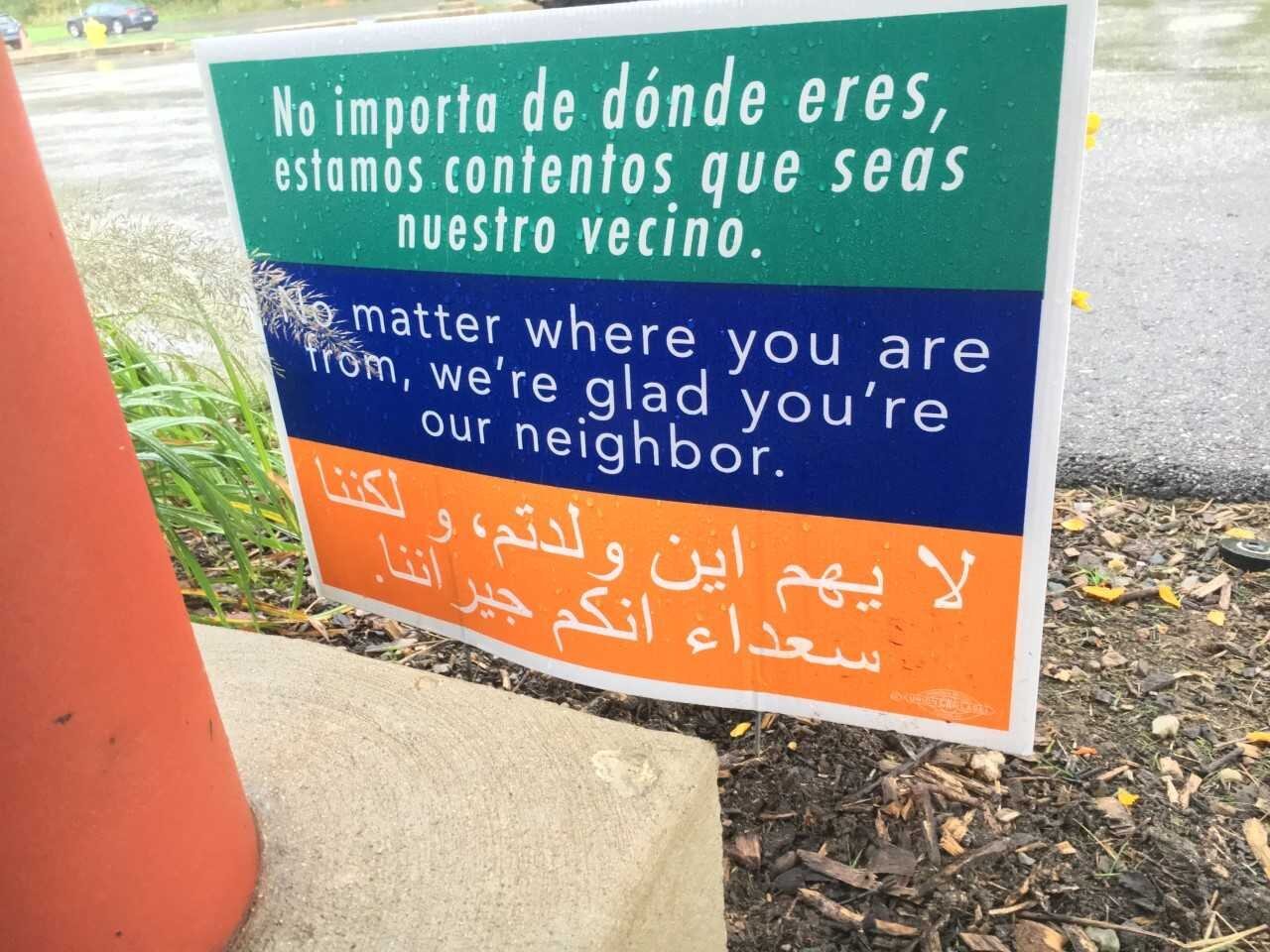What Photos Do
In our work, photographs become starting points for discussions, boundary markers for self-disclosure, and tools for communication that help participants from different backgrounds to understand their similarities and differences. Seeing through someone else’s lens brings the person behind the lens into focus. Relational bridges are built. A shared sense of purpose results, not just in a singular photograph, but in the narratives found in the artwork and attitudes of participants who complete a project with a shared sense of meaning, purpose, and agency.
Photo 1. “You are my neighbor. You may come from down the street, Jordan, Iraq, Israel, New York, Germany, Norway, India, England, or another part of the world. You are an important part of this world. May we join together and do what we cannot do alone. I am responsible for you” (Angela).
Admittedly, experiences of Interfaith Photovoice are not uniform. One Grand Rapids participant, for example, confided that the friendships that were built were still somewhat “superficial” and did not extend beyond photovoice sessions. This should not be much of a surprise since so many factors are involved in making friends (e.g., available time, shared interests, gender, race, social class) and moving people through the stages of friendship (e.g., from acquaintance to casual friend, friend, and close friend) was not necessarily the intent of this project. Our goal was not that people would enlarge their circle of close friends through photovoice, as gratifying as that might have been. Instead, we set out to create an opportunity for people with different religious identities to become acquainted with one another, learn from one another, engage their communities, and experience some level of personal or collective change. Looking back, these aspirations were realized, even though they may have been experienced unevenly by individual participants or expressed differently at each research site.
Photo 2. “Many and various ways to connect to the source of power—and to each other” (Carol).
Photographs have a wide range of utility in structured interfaith interactions such as photovoice. Photos help participants start and sustain conversations. They act as an additional form of information that help people to understand unfamiliar objects, activities, and ideas. When someone introduces an image into a conversation, it informs the boundaries of a conversation by helping participants to see what is ‘fair game’ on the basis of what is represented in the frame of the photograph. Differences come into view. As people look intently into other people’s photos, they begin to see aspects of religion in everyday life that may otherwise be overlooked. As the saying attributed to Henri Bergson goes, “The eye only sees what the mind is prepared to comprehend.” While many photographs highlight differences between religious traditions, they also can underscore the ways in which their beliefs overlap, rhyme, and resonate. Likewise, conversations about photos can also lead to the recognition that participants possess a common set of concerns arising from the human condition and experience. To varying degrees a shared sense of purpose bubbles to the surface. Solidarities result. In these ways, photographs are helpful to the photovoice process of learning about the experiences, challenges, and aspirations of people from different religious backgrounds.


